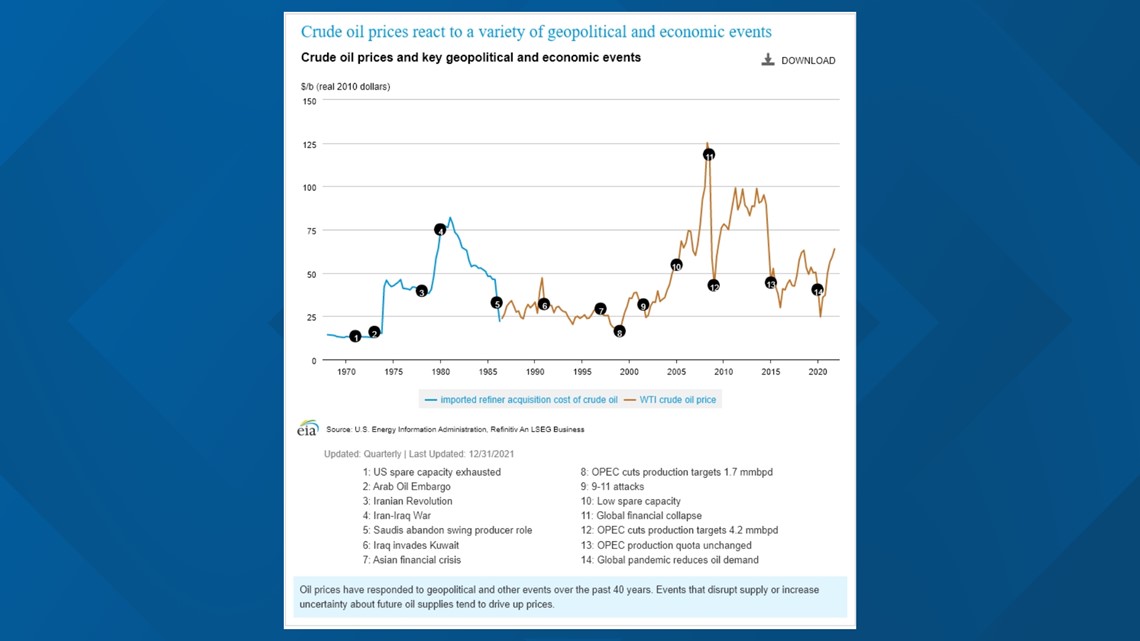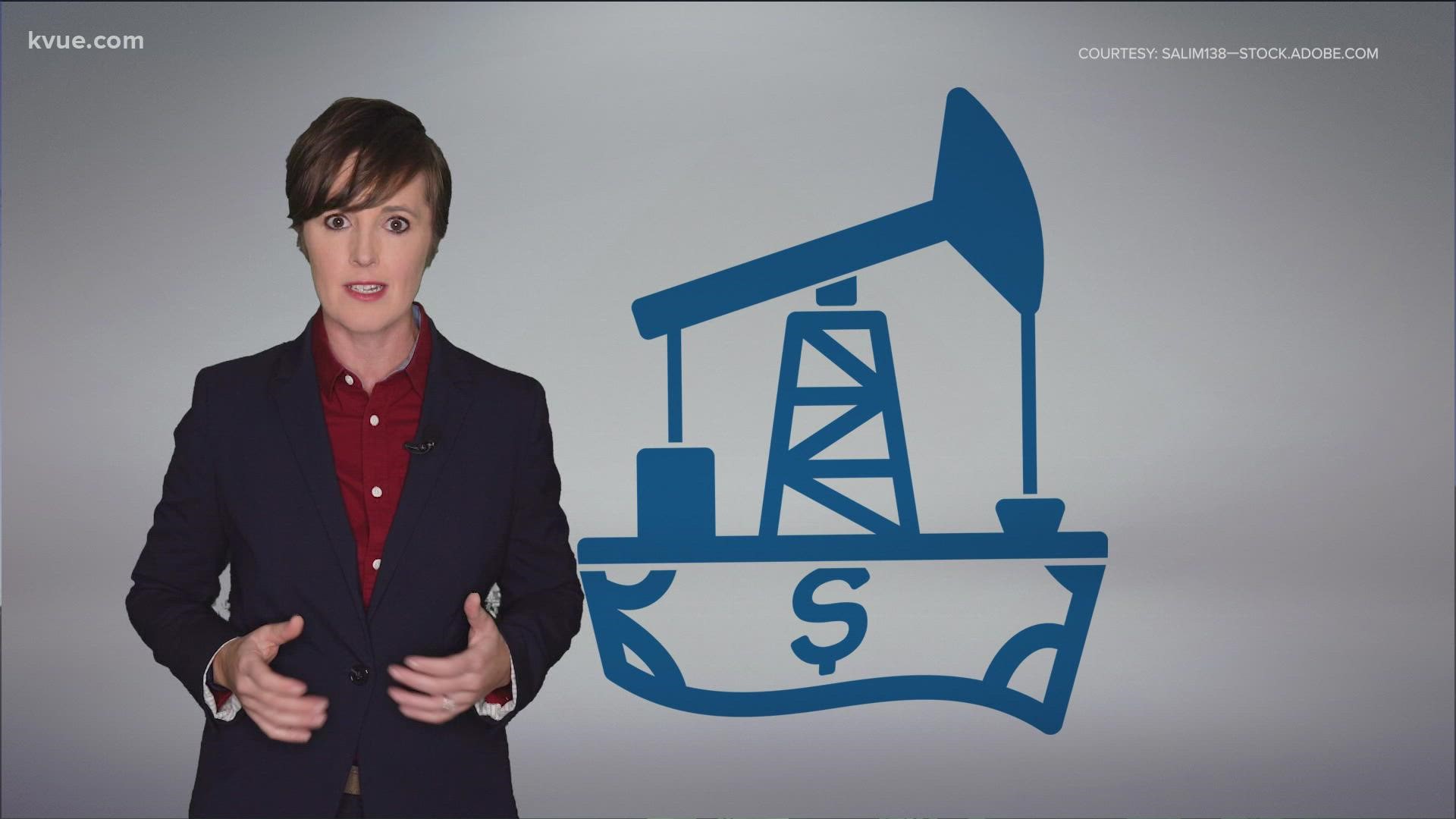AUSTIN, Texas — Other than 2019, the U.S. is producing more oil now than any other year dating back to the 1850s. Federal records show Texas produces 43% of all U.S. crude oil.
To figure out why we have high gasoline prices during a record production year, we pulled information from the U.S. Energy Information Administration (EIA), Environmental Protection Agency (EPA), American Petroleum Institute (API) and Independent Petroleum Association of America (IPAA).
Statistics kept with EIA show what makes up the price at the gas pump. It shows crude oil makes up 56% for regular gasoline, 51% for diesel. Refining, distribution, marketing and taxes split the rest.
The EPA shows crude oil is characterized by different classes. The class of oil will determine its use and its price.
For example, the EPA shows “Class A: Light, Volatile Oils” do not stick to surfaces. Water can remove it easily. In contrast, the EPA shows “Class C: Heavy, Sticky Oils” do not go through porous surfaces easily and cannot be easily flushed with water.
"The physical characteristics of crude oil determine how the refineries turn it into the highest value products," the EIA website shows.
“While transportation runs primarily on motor fuels, our society also depends on thousands of products that begin as crude oil,” the API website shows.
Those types of products include plastics, polyurethane and other consumer goods, the EIA website shows.
API showed how refineries do not process all types of crude oil, which is why the U.S. both imports and exports crude oil. Most of our crude oil comes from U.S. independent producers, IPPA’s website shows.
EIA tracks the oil imports. Federal records show 61% of crude oil imports come from Canada. Mexico is 11% and Saudi Arabia is 8% of our crude oil imports.
U.S. total petroleum imports, including crude oil, comes mainly from Canada (52%), Mexico (11%), Russia and Saudi Arabia are tied for third with 7% each. In contrast, the U.S. is 1% of Russia’s total crude oil exports.
“Oil is a global commodity, the price of which is determined by global supply and demand,” Ehud Ronn, Ph.D., professor of finance with the University of Texas at Austin McCombs School of Business, wrote to the KVUE Defenders.
World events impact the commodity market.


“Crises do manifest themselves in higher volatility (we’re more uncertain [if] oil will be delivered to the consuming markets). If it is a geopolitical crisis emanating from the Middle East or another major oil producer (currently, Russia), it is the specific crisis which elevates both volatility as well as prices,” Ronn wrote.
EIA data shows crude oil prices tied to geopolitical and economic events dating back decades. Prices spiked during the Iran-Iraq War in the 1980s, again when Iraq invaded Kuwait in the 1990s, and most significantly during the global financial collapse in 2008.
PEOPLE ARE ALSO READING:

